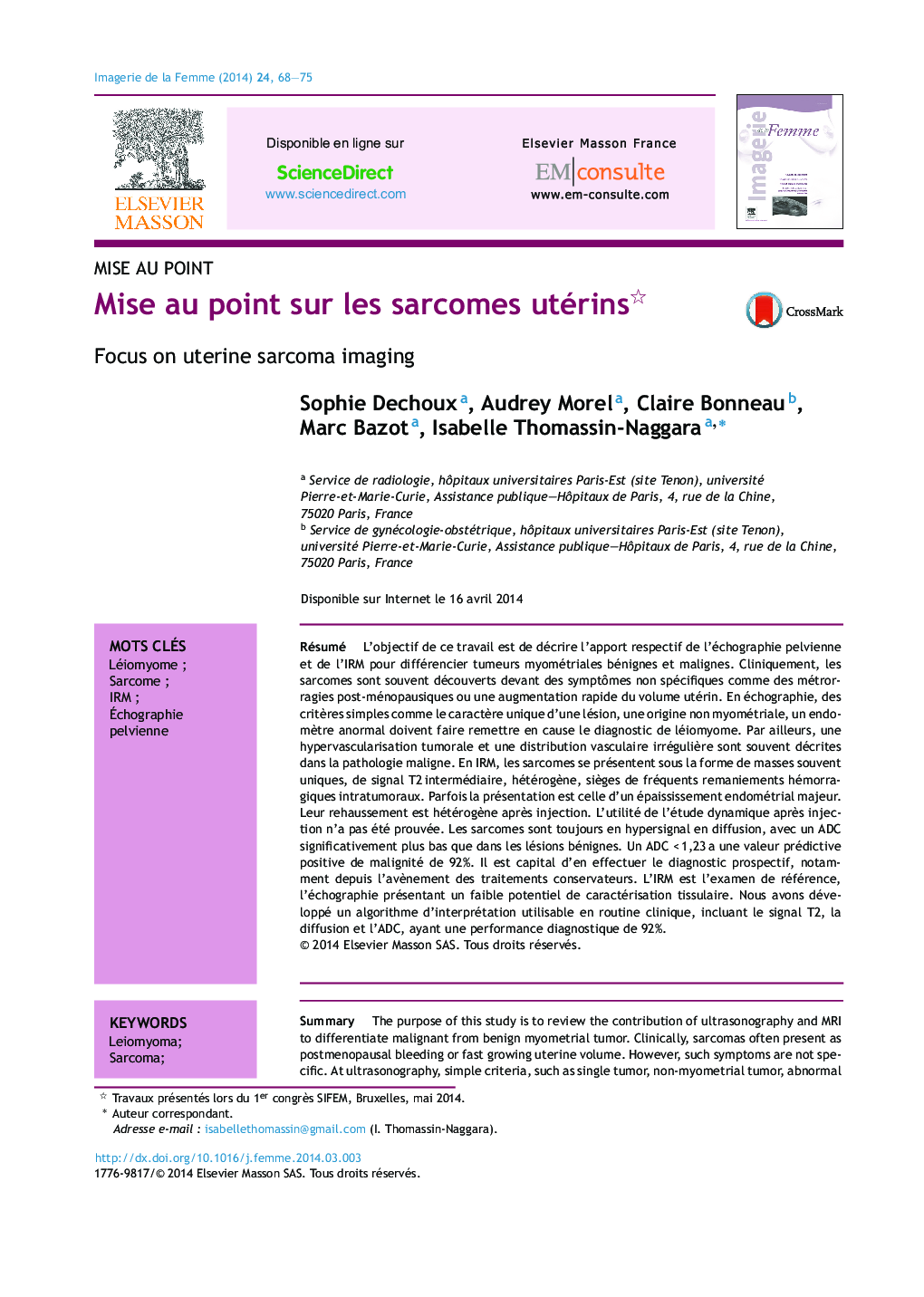| Article ID | Journal | Published Year | Pages | File Type |
|---|---|---|---|---|
| 2738111 | Imagerie de la Femme | 2014 | 8 Pages |
Abstract
The purpose of this study is to review the contribution of ultrasonography and MRI to differentiate malignant from benign myometrial tumor. Clinically, sarcomas often present as postmenopausal bleeding or fast growing uterine volume. However, such symptoms are not specific. At ultrasonography, simple criteria, such as single tumor, non-myometrial tumor, abnormal endometrium, should question the diagnosis of benign leiomyoma. Color Doppler show abnormal tumoral blood vessels. At MRI, sarcomas usually present at a unique tumor, showing intermediate heterogeneous T2-weighted signal intensity, intra-tumoral hemorrhage. It can present as an abnormal endometrial thickening. Enhancement is most of the time heterogeneous. Utility of dynamic contrast imaging have not yet been proved. All sarcomas have a high b1000Â signal intensity at diffusion imaging, with a lower ADC than benign tumor. An ADC <Â 1.23Â has a positive predictive value for malignancy of 92Â %. Accurate pre-therapeutic diagnosis is of capital importance with the advent of conservative therapeutics. MRI is the complementary reference imaging, as ultrasonography is poorly informative for tissue caracterisation. We have developed an interpretation model usable in routine practice for myometrial tumors discovered at MRI including T2Â signal, b1000Â signal and ADC measurement, with an accuracy of 92Â %.
Related Topics
Health Sciences
Medicine and Dentistry
Health Informatics
Authors
Sophie Dechoux, Audrey Morel, Claire Bonneau, Marc Bazot, Isabelle Thomassin-Naggara,
